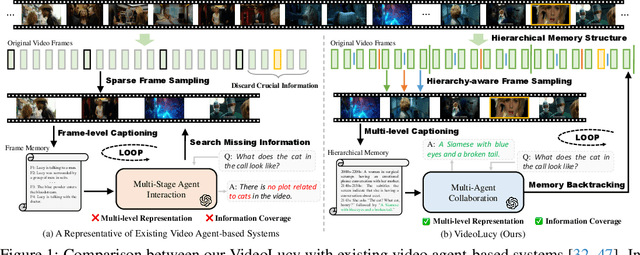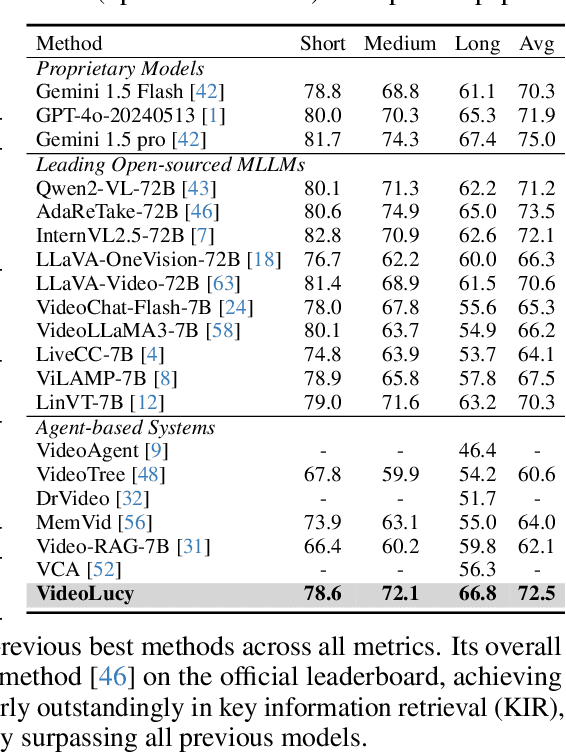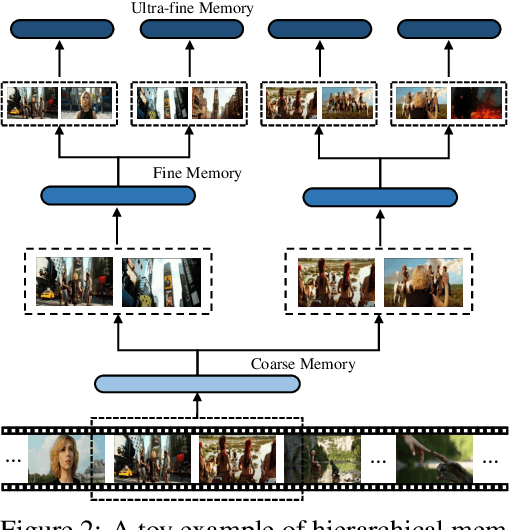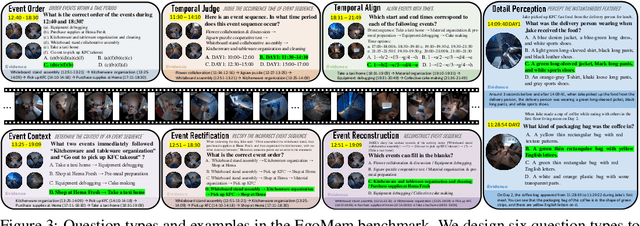Ziwei Liu
Nanyang Technological University
From Pixels to Words -- Towards Native Vision-Language Primitives at Scale
Oct 16, 2025Abstract:The edifice of native Vision-Language Models (VLMs) has emerged as a rising contender to typical modular VLMs, shaped by evolving model architectures and training paradigms. Yet, two lingering clouds cast shadows over its widespread exploration and promotion: (-) What fundamental constraints set native VLMs apart from modular ones, and to what extent can these barriers be overcome? (-) How to make research in native VLMs more accessible and democratized, thereby accelerating progress in the field. In this paper, we clarify these challenges and outline guiding principles for constructing native VLMs. Specifically, one native VLM primitive should: (i) effectively align pixel and word representations within a shared semantic space; (ii) seamlessly integrate the strengths of formerly separate vision and language modules; (iii) inherently embody various cross-modal properties that support unified vision-language encoding, aligning, and reasoning. Hence, we launch NEO, a novel family of native VLMs built from first principles, capable of rivaling top-tier modular counterparts across diverse real-world scenarios. With only 390M image-text examples, NEO efficiently develops visual perception from scratch while mitigating vision-language conflicts inside a dense and monolithic model crafted from our elaborate primitives. We position NEO as a cornerstone for scalable and powerful native VLMs, paired with a rich set of reusable components that foster a cost-effective and extensible ecosystem. Our code and models are publicly available at: https://github.com/EvolvingLMMs-Lab/NEO.
RealDPO: Real or Not Real, that is the Preference
Oct 16, 2025Abstract:Video generative models have recently achieved notable advancements in synthesis quality. However, generating complex motions remains a critical challenge, as existing models often struggle to produce natural, smooth, and contextually consistent movements. This gap between generated and real-world motions limits their practical applicability. To address this issue, we introduce RealDPO, a novel alignment paradigm that leverages real-world data as positive samples for preference learning, enabling more accurate motion synthesis. Unlike traditional supervised fine-tuning (SFT), which offers limited corrective feedback, RealDPO employs Direct Preference Optimization (DPO) with a tailored loss function to enhance motion realism. By contrasting real-world videos with erroneous model outputs, RealDPO enables iterative self-correction, progressively refining motion quality. To support post-training in complex motion synthesis, we propose RealAction-5K, a curated dataset of high-quality videos capturing human daily activities with rich and precise motion details. Extensive experiments demonstrate that RealDPO significantly improves video quality, text alignment, and motion realism compared to state-of-the-art models and existing preference optimization techniques.
VideoLucy: Deep Memory Backtracking for Long Video Understanding
Oct 14, 2025



Abstract:Recent studies have shown that agent-based systems leveraging large language models (LLMs) for key information retrieval and integration have emerged as a promising approach for long video understanding. However, these systems face two major challenges. First, they typically perform modeling and reasoning on individual frames, struggling to capture the temporal context of consecutive frames. Second, to reduce the cost of dense frame-level captioning, they adopt sparse frame sampling, which risks discarding crucial information. To overcome these limitations, we propose VideoLucy, a deep memory backtracking framework for long video understanding. Inspired by the human recollection process from coarse to fine, VideoLucy employs a hierarchical memory structure with progressive granularity. This structure explicitly defines the detail level and temporal scope of memory at different hierarchical depths. Through an agent-based iterative backtracking mechanism, VideoLucy systematically mines video-wide, question-relevant deep memories until sufficient information is gathered to provide a confident answer. This design enables effective temporal understanding of consecutive frames while preserving critical details. In addition, we introduce EgoMem, a new benchmark for long video understanding. EgoMem is designed to comprehensively evaluate a model's ability to understand complex events that unfold over time and capture fine-grained details in extremely long videos. Extensive experiments demonstrate the superiority of VideoLucy. Built on open-source models, VideoLucy significantly outperforms state-of-the-art methods on multiple long video understanding benchmarks, achieving performance even surpassing the latest proprietary models such as GPT-4o. Our code and dataset will be made publicly at https://videolucy.github.io
VChain: Chain-of-Visual-Thought for Reasoning in Video Generation
Oct 06, 2025Abstract:Recent video generation models can produce smooth and visually appealing clips, but they often struggle to synthesize complex dynamics with a coherent chain of consequences. Accurately modeling visual outcomes and state transitions over time remains a core challenge. In contrast, large language and multimodal models (e.g., GPT-4o) exhibit strong visual state reasoning and future prediction capabilities. To bridge these strengths, we introduce VChain, a novel inference-time chain-of-visual-thought framework that injects visual reasoning signals from multimodal models into video generation. Specifically, VChain contains a dedicated pipeline that leverages large multimodal models to generate a sparse set of critical keyframes as snapshots, which are then used to guide the sparse inference-time tuning of a pre-trained video generator only at these key moments. Our approach is tuning-efficient, introduces minimal overhead and avoids dense supervision. Extensive experiments on complex, multi-step scenarios show that VChain significantly enhances the quality of generated videos.
A Lightweight Convolution and Vision Transformer integrated model with Multi-scale Self-attention Mechanism
Aug 23, 2025Abstract:Vision Transformer (ViT) has prevailed in computer vision tasks due to its strong long-range dependency modelling ability. However, its large model size with high computational cost and weak local feature modeling ability hinder its application in real scenarios. To balance computation efficiency and performance, we propose SAEViT (Sparse-Attention-Efficient-ViT), a lightweight ViT based model with convolution blocks, in this paper to achieve efficient downstream vision tasks. Specifically, SAEViT introduces a Sparsely Aggregated Attention (SAA) module that performs adaptive sparse sampling based on image redundancy and recovers the feature map via deconvolution operation, which significantly reduces the computational complexity of attention operations. In addition, a Channel-Interactive Feed-Forward Network (CIFFN) layer is developed to enhance inter-channel information exchange through feature decomposition and redistribution, mitigating redundancy in traditional feed-forward networks (FNN). Finally, a hierarchical pyramid structure with embedded depth-wise separable convolutional blocks (DWSConv) is devised to further strengthen convolutional features. Extensive experiments on mainstream datasets show that SAEViT achieves Top-1 accuracies of 76.3\% and 79.6\% on the ImageNet-1K classification task with only 0.8 GFLOPs and 1.3 GFLOPs, respectively, demonstrating a lightweight solution for various fundamental vision tasks.
Collaborative Multi-Modal Coding for High-Quality 3D Generation
Aug 21, 2025Abstract:3D content inherently encompasses multi-modal characteristics and can be projected into different modalities (e.g., RGB images, RGBD, and point clouds). Each modality exhibits distinct advantages in 3D asset modeling: RGB images contain vivid 3D textures, whereas point clouds define fine-grained 3D geometries. However, most existing 3D-native generative architectures either operate predominantly within single-modality paradigms-thus overlooking the complementary benefits of multi-modality data-or restrict themselves to 3D structures, thereby limiting the scope of available training datasets. To holistically harness multi-modalities for 3D modeling, we present TriMM, the first feed-forward 3D-native generative model that learns from basic multi-modalities (e.g., RGB, RGBD, and point cloud). Specifically, 1) TriMM first introduces collaborative multi-modal coding, which integrates modality-specific features while preserving their unique representational strengths. 2) Furthermore, auxiliary 2D and 3D supervision are introduced to raise the robustness and performance of multi-modal coding. 3) Based on the embedded multi-modal code, TriMM employs a triplane latent diffusion model to generate 3D assets of superior quality, enhancing both the texture and the geometric detail. Extensive experiments on multiple well-known datasets demonstrate that TriMM, by effectively leveraging multi-modality, achieves competitive performance with models trained on large-scale datasets, despite utilizing a small amount of training data. Furthermore, we conduct additional experiments on recent RGB-D datasets, verifying the feasibility of incorporating other multi-modal datasets into 3D generation.
Has GPT-5 Achieved Spatial Intelligence? An Empirical Study
Aug 18, 2025Abstract:Multi-modal models have achieved remarkable progress in recent years. Nevertheless, they continue to exhibit notable limitations in spatial understanding and reasoning, which are fundamental capabilities to achieving artificial general intelligence. With the recent release of GPT-5, allegedly the most powerful AI model to date, it is timely to examine where the leading models stand on the path toward spatial intelligence. First, we propose a comprehensive taxonomy of spatial tasks that unifies existing benchmarks and discuss the challenges in ensuring fair evaluation. We then evaluate state-of-the-art proprietary and open-source models on eight key benchmarks, at a cost exceeding one billion total tokens. Our empirical study reveals that (1) GPT-5 demonstrates unprecedented strength in spatial intelligence, yet (2) still falls short of human performance across a broad spectrum of tasks. Moreover, we (3) identify the more challenging spatial intelligence problems for multi-modal models, and (4) proprietary models do not exhibit a decisive advantage when facing the most difficult problems. In addition, we conduct a qualitative evaluation across a diverse set of scenarios that are intuitive for humans yet fail even the most advanced multi-modal models.
4DNeX: Feed-Forward 4D Generative Modeling Made Easy
Aug 18, 2025Abstract:We present 4DNeX, the first feed-forward framework for generating 4D (i.e., dynamic 3D) scene representations from a single image. In contrast to existing methods that rely on computationally intensive optimization or require multi-frame video inputs, 4DNeX enables efficient, end-to-end image-to-4D generation by fine-tuning a pretrained video diffusion model. Specifically, 1) to alleviate the scarcity of 4D data, we construct 4DNeX-10M, a large-scale dataset with high-quality 4D annotations generated using advanced reconstruction approaches. 2) we introduce a unified 6D video representation that jointly models RGB and XYZ sequences, facilitating structured learning of both appearance and geometry. 3) we propose a set of simple yet effective adaptation strategies to repurpose pretrained video diffusion models for 4D modeling. 4DNeX produces high-quality dynamic point clouds that enable novel-view video synthesis. Extensive experiments demonstrate that 4DNeX outperforms existing 4D generation methods in efficiency and generalizability, offering a scalable solution for image-to-4D modeling and laying the foundation for generative 4D world models that simulate dynamic scene evolution.
Cut2Next: Generating Next Shot via In-Context Tuning
Aug 12, 2025Abstract:Effective multi-shot generation demands purposeful, film-like transitions and strict cinematic continuity. Current methods, however, often prioritize basic visual consistency, neglecting crucial editing patterns (e.g., shot/reverse shot, cutaways) that drive narrative flow for compelling storytelling. This yields outputs that may be visually coherent but lack narrative sophistication and true cinematic integrity. To bridge this, we introduce Next Shot Generation (NSG): synthesizing a subsequent, high-quality shot that critically conforms to professional editing patterns while upholding rigorous cinematic continuity. Our framework, Cut2Next, leverages a Diffusion Transformer (DiT). It employs in-context tuning guided by a novel Hierarchical Multi-Prompting strategy. This strategy uses Relational Prompts to define overall context and inter-shot editing styles. Individual Prompts then specify per-shot content and cinematographic attributes. Together, these guide Cut2Next to generate cinematically appropriate next shots. Architectural innovations, Context-Aware Condition Injection (CACI) and Hierarchical Attention Mask (HAM), further integrate these diverse signals without introducing new parameters. We construct RawCuts (large-scale) and CuratedCuts (refined) datasets, both with hierarchical prompts, and introduce CutBench for evaluation. Experiments show Cut2Next excels in visual consistency and text fidelity. Crucially, user studies reveal a strong preference for Cut2Next, particularly for its adherence to intended editing patterns and overall cinematic continuity, validating its ability to generate high-quality, narratively expressive, and cinematically coherent subsequent shots.
Hi3DEval: Advancing 3D Generation Evaluation with Hierarchical Validity
Aug 07, 2025Abstract:Despite rapid advances in 3D content generation, quality assessment for the generated 3D assets remains challenging. Existing methods mainly rely on image-based metrics and operate solely at the object level, limiting their ability to capture spatial coherence, material authenticity, and high-fidelity local details. 1) To address these challenges, we introduce Hi3DEval, a hierarchical evaluation framework tailored for 3D generative content. It combines both object-level and part-level evaluation, enabling holistic assessments across multiple dimensions as well as fine-grained quality analysis. Additionally, we extend texture evaluation beyond aesthetic appearance by explicitly assessing material realism, focusing on attributes such as albedo, saturation, and metallicness. 2) To support this framework, we construct Hi3DBench, a large-scale dataset comprising diverse 3D assets and high-quality annotations, accompanied by a reliable multi-agent annotation pipeline. We further propose a 3D-aware automated scoring system based on hybrid 3D representations. Specifically, we leverage video-based representations for object-level and material-subject evaluations to enhance modeling of spatio-temporal consistency and employ pretrained 3D features for part-level perception. Extensive experiments demonstrate that our approach outperforms existing image-based metrics in modeling 3D characteristics and achieves superior alignment with human preference, providing a scalable alternative to manual evaluations. The project page is available at https://zyh482.github.io/Hi3DEval/.
 Add to Chrome
Add to Chrome Add to Firefox
Add to Firefox Add to Edge
Add to Edge